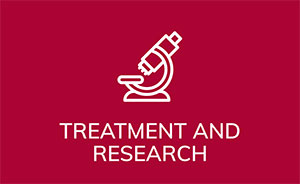Authored by Brian Koffman, MDCM (retired), MSEd
Many patients wish to control their CLL naturally without the use of medications. Some are trying to see if tea made from cordyceps, a medical mushroom, helps.
With the help of Glenn Sabin and several others, CLL Society has helped organize a broad effort to research its possible risks and benefits.
Remember that chronic lymphocytic leukemia / small lymphocytic lymphoma (CLL / SLL) is very heterogeneous or variable in its course, so research needs to be rigorous to assess if any effects, good or bad, are truly from cordyceps or any supplement.
What follows is a brief overview of what is and isn’t known about it.
Most importantly, CLL Society recommends that no one try cordyceps without informing their healthcare team and ensuring appropriate monitoring.
BACKGROUND ON CORDYCEPS
Cordyceps sinensis, naturally found in cold grasslands above 4,000 feet in China, is a parasitic mushroom that grows on and eventually kills its host, the caterpillar of the moth Hepilus fabricius. Today, when you buy cordyceps at the market or order it at a restaurant, it has almost certainly been grown commercially and not foraged. And it probably was Cordyceps militaris which is easier to grow and has similar but not identical constituents including cordycepin.
It has been used for over a thousand years as a tonic for many conditions and is revered in traditional Chinese medicine.
BIOLOGY AND CHEMICAL STRUCTURE OF CORDYCEPS
It is assumed but not proven that the active ingredient is cordycepin or 3′-deoxyadenosine.
Cordycepin is a purine analog antimetabolite. Purine analogs control cancer by damaging RNA or DNA. That might sound familiar to some of those who were around when the best treatment for CLL / SLL was chemoimmunotherapy, FCR. The F in FCR is fludarabine, also a purine analog antimetabolite. It is possible that cordycepin is indeed active, even very active, because it’s simply an oral form of chemotherapy. However, cordycepin does appear to have another possible mechanism of action (MOA) to control CLL / SLL, including upregulating immune function to attack the cancer and inducing apoptosis or cell death independent of the need for p53.
We really don’t know for sure if and how it works. There are some good basic science reviews on cordyceps, and many preclinical and very few clinical articles have been published. Most publications appear in lower-quality science journals, hence the need for stronger research.
One company is already looking to produce a commercial pharmaceutical from mushrooms.
NIH’S CLL NATURAL HISTORY STUDY
Dr. Sun, as the principal investigator, and Drs. Wiestner and Pleyer are running the National Institutes of Health’s (NIH) long-standing Natural History Trial for patients with CLL / SLL in Bethesda, MD. They are interested in including patients who are considering treatment or a supplement with a goal of modifying the course of their CLL and patients who are receiving treatment or have previously been treated for CLL. Ideally, patients would be seen before making such changes. The NIH covers all medical and most travel expenses. You can learn more about the Natural History Trial for patients with CLL / SLL by watching the interview with Dr. Christopher Pleyer. While the study is open for new patients, there is currently a wait list for inclusion.
CURRENT STUDIES WITH CORDYCEPS
Glenn Sabin leads a Facebook Group where several members, approximately two out of every three, report impressive success in dropping absolute lymphocyte counts (ALC) by drinking a tea made from dried cordyceps powder. None of the individuals stopped due to side effects, but some did because of rising ALC. One doctor reported one of her patients had a severe rash related to cordyceps.
These cases spurred interest to move forward with more rigorous research.
Dr. Matt Davids at Dana Farber in Boston, MA is interested in studying cell lines of patients considering or taking cordyceps.
Other physicians and scientists are interested, too, and may start studies on it soon.
Dr. John Byrd at U. of Cincinnati is exploring using a mouse model of CLL to study its effects.
Dr. DeLeys Brandman of Cancer Commons discussed their ability to add high-quality Patient-Reported Outcomes (PRO) and possibly lab data to a patient registry.
All the doctors on the CLL Society Medical Advisory Board are aware of the growing use of cordyceps and are open to discussing its pros and cons with their patients.
In fact, any and all hematologists will want to and should know if you are using it or considering it.
THE BOTTOM LINE WITH CORDYCEPS AND CLL
- Some preclinical and very little clinical data suggest that cordyceps mushrooms could be active in CLL. We really don’t know.
- It could simply be a form of oral chemotherapy that could cause long and short-term problems.
- We do not know if it’s safe. Some serious adverse events, such as secondary cancers and bone marrow damage, might not be seen until years later, as is the case with fludarabine.
- Everyone who is considering or already taking cordyceps should talk to their doctor and, at minimum, closely monitor their CBC, kidney function, and liver enzymes.
- Until more is understood about its MOA, we strongly advise against mixing it with other treatments for CLL / SLL without the agreement of your healthcare team.
- If you are already taking it or going to start it, please consider the free NIH trial or seeing Dr. Davids or any CLL expert to get the necessary monitoring to assess if it is indeed safe and efficacious.
CLL Society is excited to have organized a group of world-class researchers and physician-scientists to assess the potentially significant upsides and downsides of this new, easily accessible, and relatively inexpensive natural therapy for CLL / SLL.
The Expert Interview Series is made possible by support from:


